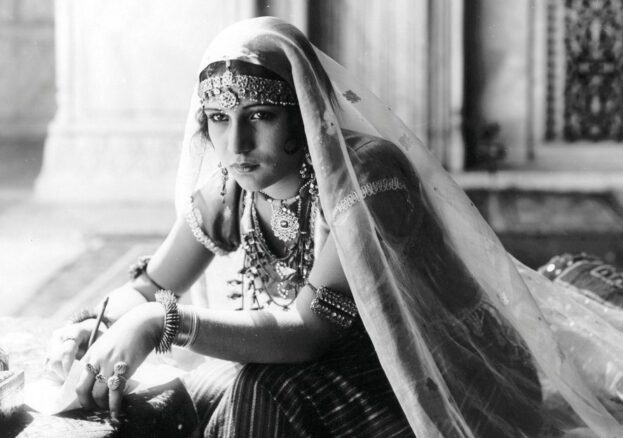Shiraz: A Romance of India at HOME
Nirmala PatelBook now
Shiraz: A Romance of India
Always double check opening hours with the venue before making a special visit.

Franz Osten’s Shiraz: A Romance of India is fortuned with a BFI National Archive re-release – so too are its contemporary audience; coming to it ninety years on, in its second life. The new restoration is a true celebration of the earliest form of cinema: the silent film. Shiraz, in particular, is a triumph of this form; its vast scenery and scale meriting this freshly polished showcase. Notably distinct as an Indian/British/German co-production, Shiraz was filmed on location in India with an all-Indian cast. Exemplary casting includes the film’s main producer, Himansu Rai, acting in a starring role as the captivating title character, Shiraz.
Central to the plot is a princess, whose royal status is forgone in early childhood when she becomes orphaned in the desert, during the Mughal Empire. Found and taken in by Shiraz’s father, the princess takes on a humble, new identity as Selima; the village sage deems her to be a divine gift to her adoptive family. While Selima grows up as a sibling to Shiraz, he finds his affections towards her have deepened in young adulthood. Indeed, Selima is adored wherever she goes, which prompts opportunists to see value in her kidnap and sale to the emperor. Shiraz’s doting devotion to the princess guides an imagined tale of the Taj Mahal’s conception, travelling through an array of settings and trials.
Deliberately fictitious in its attempt to forge a legend, Shiraz deploys the signature silent film tropes of intertitles and playful facial cues, which are apt in honouring the piece’s theatrical origins as a stage play. As a viewer immersed in its presence, you maintain an awareness that you are witness to an old treasure. A feeling of wonder is enhanced by a rich music score from Anoushka Shankar. Accompanying the action throughout, but not drawing attention away from it, this new music commission champions the visual brilliance in a purposeful and timely way. No longer bare of sound, Shankar’s dynamic composition is a welcome addition, which shines in its own moments by offering colourful quirks beyond the traditional, Indian classical format.
Certainly, to experience Shiraz on today’s big screen, is to experience a spectacle far beyond the average cinema visit. Much as the awe-inspiring Taj Mahal itself, here we may marvel at a monument of world film heritage.





























